#informational
Explore tagged Tumblr posts
Text









#asexual positivity#Asexual#Ace#Asexuality#Ace week#Ace Week 2024#ace#aspec#aroace#asexual#asexuality#lgbtqia+#queer#queer pride#demisexual#demisexuality#greysexuality#greysexual#cupiosexual#Cupiosexuality#aegosexual#Aegosexuality#lgbtqia#asexual community#asexual spectrum#asexual pride#Informational#Signs you might be ace#Acespec#aceweek2024
3K notes
·
View notes
Text
1K notes
·
View notes
Text
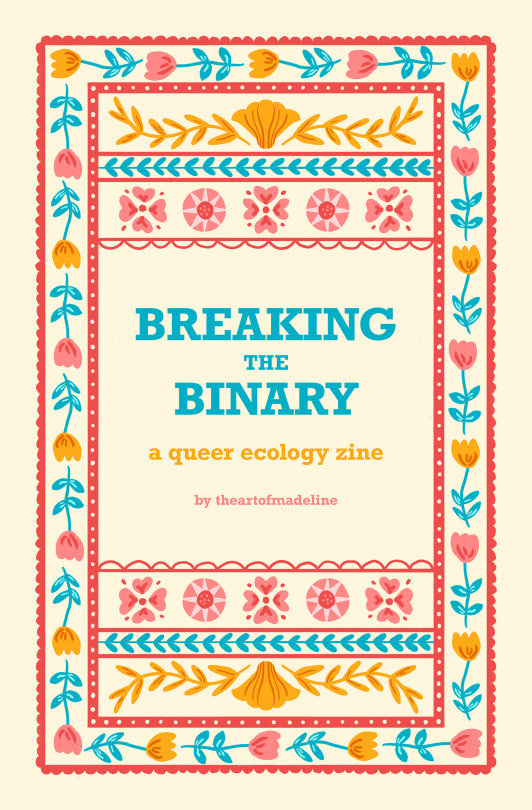

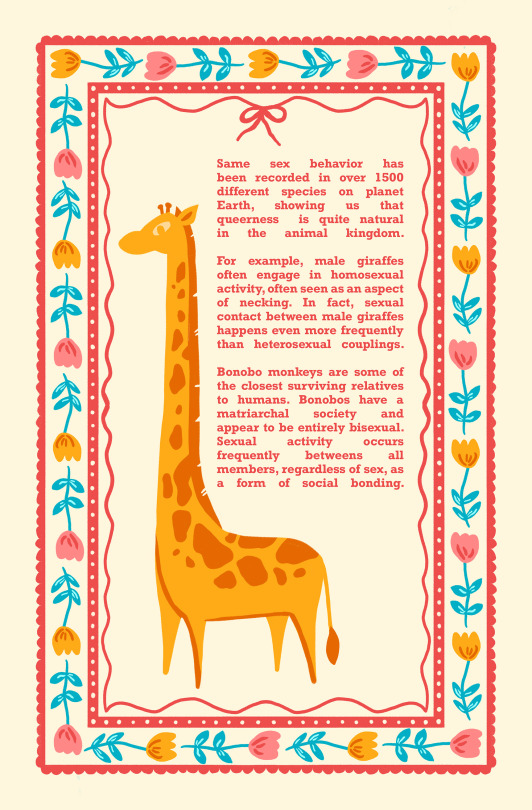



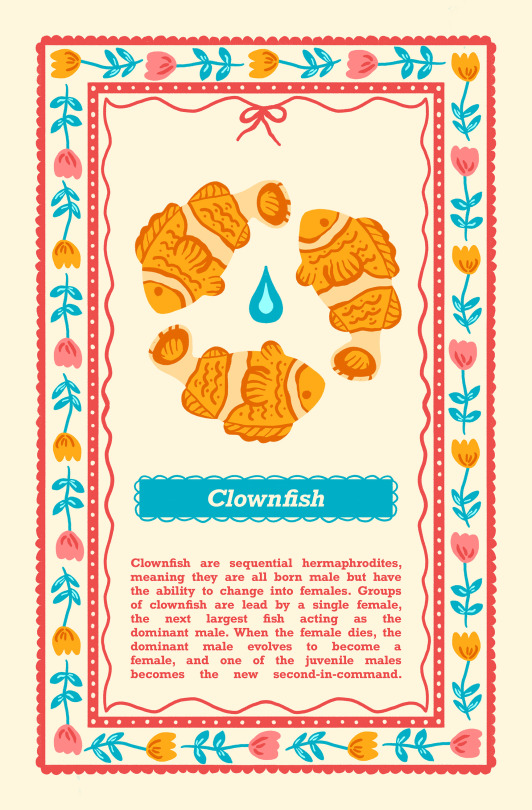
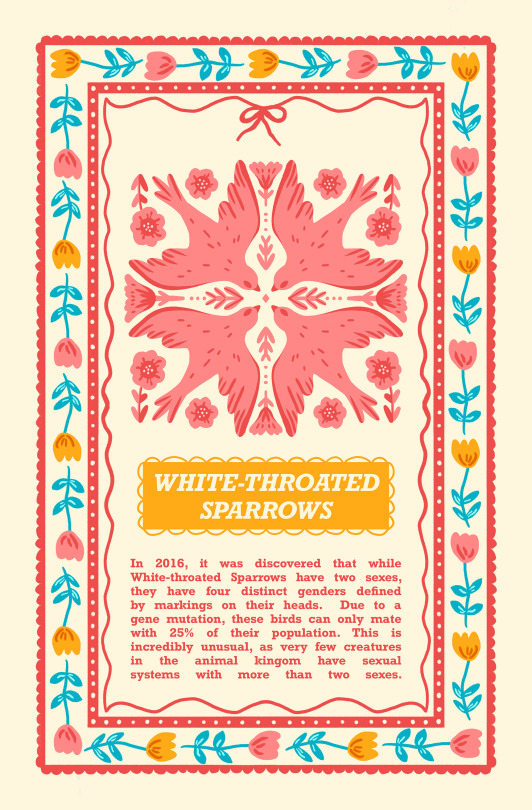
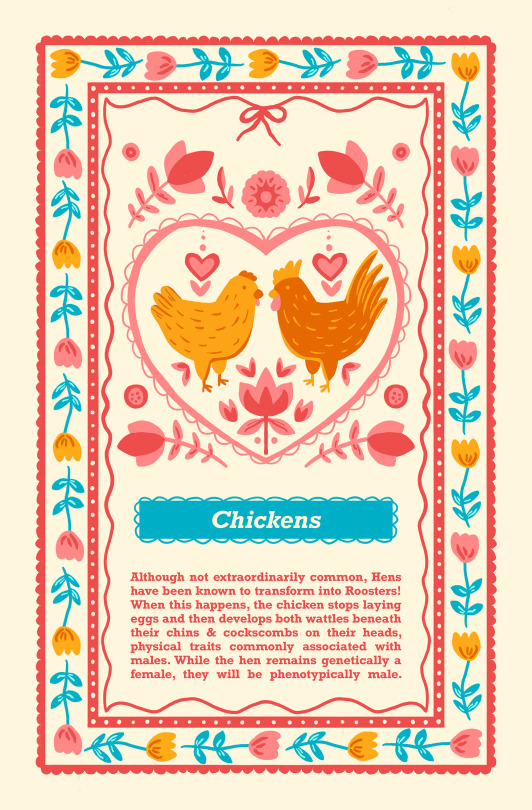

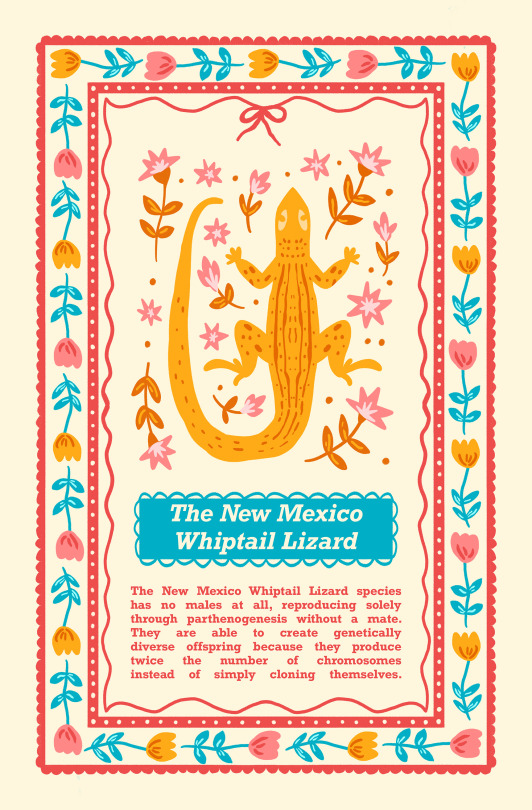

my new zine about queer ecology! researching this taught me that nature is cool af.
available in my shop soon :)
#zine#queer ecology#artists on tumblr#natue#zinemaking#zinestar#illustration#digital art#zines#art#artwork#theartofmadeline#really really happy with how this turned out!!#debated for awhile about where I wanted to just share a preview or the whole thing#but ultimately I researched this topic to share it!!!#and it was so much fun#anyways these should be in my shop next week!!#i hope they print cute#informational#queer#lgbt#lgbtq
565 notes
·
View notes
Text
Is that parrot’s beak too long?
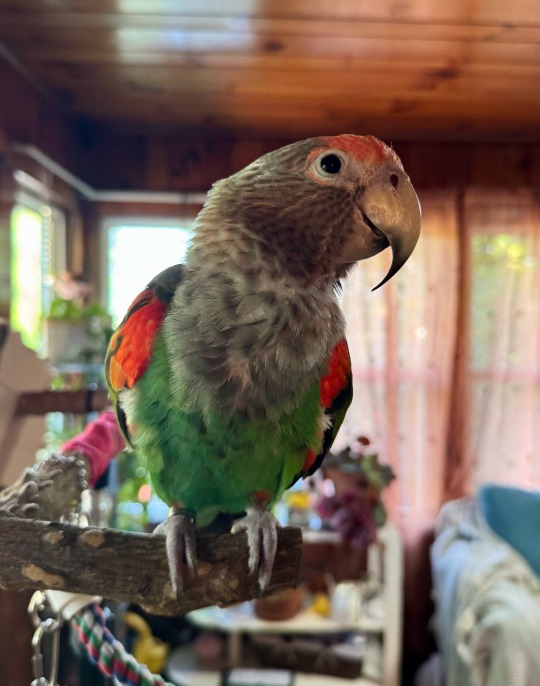
This is a question that I posed a lot when I first got Rhu, and I wonder if other people have noticed. I figured I would made it an education opportunity!
The short answer is no! Even though this beak length and shape might be concerning on other parrots, there are several factors in considering whether something is beak overgrowth!
1) Wild examples and species specifics
This is the biggest factor vets take into account. Always look up wild pictures to compare! When you look at wild Brown-necked parrots, the majority have a very elongated, thin maxilla (top beak) tip:
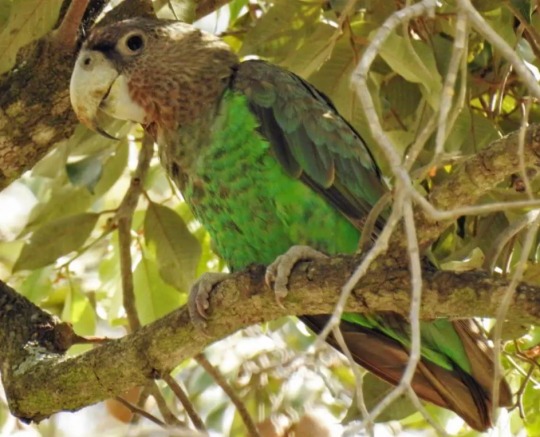
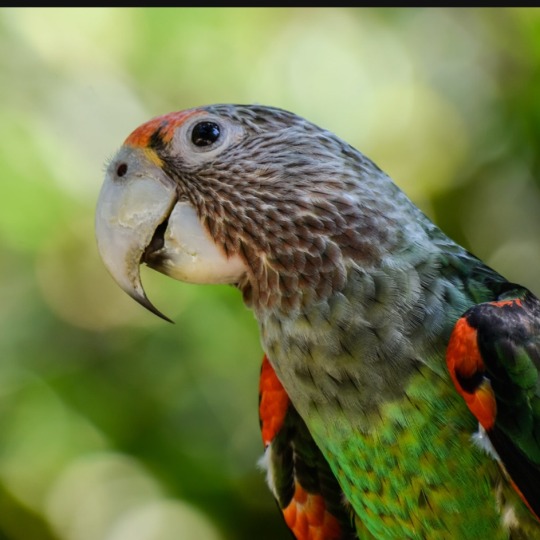
Brown-necks are also “big boned” parrots that need a longer beak to support their weight because they are heavier!
2) Functionality
Can they eat and get around? Rhu can support her weight with her beak tip and can manipulate objects easily. I can also observe the function of it, which is to scoop nut meat out of a hard shell.
3) The “bottom of the beak” rule
Many people judge overgrowth by the bottom of the beak (mandible) aligning with the tip. Brown-necked parrots have a very long mandible, similar to the structure of a macaw.
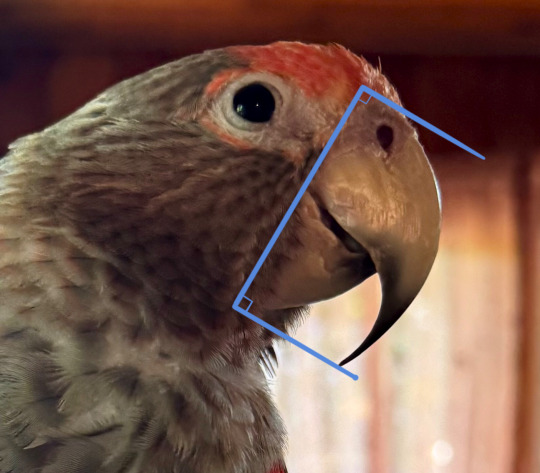
4) Check with a vet!
My avian vet isn’t worried about the length! If it is symmetrical, maintaining consistent length, and functional, it’s doing just fine.
123 notes
·
View notes
Text
My Hero Academia doesn't take place in Musutafu
I may have posted about this before, but I wanted to make a dedicated post about this. It's commonly known in the Western fandom that 'Musutafu' is the city where UA is located, where Izuku and Bakugou and the Todorokis live, and where pretty much anything important happens. It's basically MHA's equivalent of Gotham from batfam fanfics.
Except, I'm certain this is false, and I have evidence.
For starters, Musutafu is mentioned in canon sources I believe just twice: first in the dust cover from the Japanese volume 2,

where Backdraft is doing an advertising campaign for the city's fire department. (Photo credit @ shibuyasmash on twitter)
Secondly, it's the name of the middle school where Kirishima and Ashido attended.

(Photo taken by me, from volume 16)
I did check and the kanji are the same in both sources, so it's definitely the same Musutafu and not two different places. The school is certainly named after the city it's in.
However- and this is the smoking gun: Kirishima and Ashido are from the Chiba prefecture, placing the city of Musutafu in Chiba.
But Izuku, and the rest of the origin trio, live "around Shizuoka prefecture".


(Photos taken by me, of the Ultra Analysis supplementary book)
And while the two prefectures are close by, putting our protagonists (and UA) in Chiba would be a bit of a stretch.

(From Wikipedia, edited by me)
Actually, if you consider the anime canon, season 7 gave us a location for UA, which matches pretty well with the evidence so far.

(From MHA season 7)
I've pointed to it right there, on the coast near the western edge of the Shizuoka prefecture.
(This isn't super relevant to the issue at hand, but not a lot of people realize that UA is near the coast- you can see it in this shot from the second season 7 opening, and I think you can also see the ocean from a window sometime in season 1 or 2 when Izuku is talking to Uraraka.)

(From MHA season 7)
So basically, to wrap things up, I don't believe it's possible that Musutafu is the name of the city where the main events of My Hero Academia take place. The name is barely mentioned in canon sources, and when it is it's somewhere else entirely. My guess is the misonception started early on in the fandom's infancy and spread quickly, especially among fanfic writers. And since canon never really gave us a city name, there was no reason for the fandom to give that up.
But what does it matter? This is such an entrenched misconception that the wiki claims it to be true, and I'm sure if I went to go edit it it'd just be put right back. I've talked to people about this before, and one writer's response basically amounted to "cool, but everybody's expecting Mustafu so that's what I'll continue using".
I guess this is just one of those little inconsequential things that annoys me for no good reason.
(Please go check out this Twitter thread- this is where I learned of this and I'm basically just summarizing the thread here. That one goes into much more detail.)
#bnha#mha#midoriya izuku#bakugou katsuki#todoroki shouto#kirishima eijirou#ashido mina#backdraft#info#informational#mha theory#bnha theory#mha thoughts#bnha thoughts
81 notes
·
View notes
Text
How to Handle Anon Hate
Anonymous hate, or anon hate, has been a user issue since the dawn of its feature. As of 2023, only Tumblr users can send anonymous asks. Receiving hateful or harmful anons is stressful and disheartening, but there are ways to protect yourself.
What not to do: Do NOT answer anon hate and do not acknowledge it publically. Answering or acknowledging anon hate will encourage the sender to continue to harass you. The sender wants a reaction out of the user, negative or otherwise. Acknowledging the anon gives them what they want.
Acknowledging or answering anon hate also exposes other users to negativity, which creates an unsafe dash environment and protects no one.
What to do: If you receive anon hate, block the anon or turn anon off through your blog's settings. You can block anons on desktop by going to the three dots in the upper right corner of the ask ( also known as the meatball menu ) and click Block @Anonymous.

You can block anons on mobile by going to the meatball menu on the anonymous ask and clicking Block @Anonymous.

What blocking an anon does: Blocking an anon completely blocks the sender's IP. This means the user who sent hate can't send an ask, anonymous or otherwise, to the user on any account. They can not make a new account to send an ask to your blog.
What blocking an anon does not do: The sender will not show up in your blog's blocklist. As of April 2024, there is no way to reveal who sent anon hate.
The sender can still interact with your blog through replies, reblogging, liking posts, and sending IMs. It is unlikely they will send hate through other means without being anonymous. If they harass you off anon, block the user.
If you see a fellow Tumblr user being harassed by anon hate, remind them to block future anons and to turn off anons for their inbox.
379 notes
·
View notes
Text

I don't know about anybody else, but it has been very hot. It is very important to drink water! (heat stroke is not fun,,, trust me!) but... water can be so boring!
so what do you do to remedy this? I have some tips!
🫧 Have a special cup just for water!
Having a special cup just for water might inspire you to remember to drink it! the cup can be anything, a bottle, sippy. I have a big big plastic cup that I put aluminum foil on top of. I then poke a straw in :>
🫧 Use fun ice cubes!
personally water is alot more pleasing to drink when it's ice cold. in itself ice cubes are neat, but you can jazz them up further! In the baking aisle of Walmart, they have molds meant for jellos and stuff you can use for ice cubes! I really wanna get a unicorn shaped tray 𖹭
🫧 Use flavor packets!
not everyone likes plain old water, and that's valid! a way to try and remedy this is to flavor it! There's so many flavoring options. you can get powder, drops, and all that sort. and you can get it sugar free! There's so many options. You can experiment as well to see how much you need to make it taste good to you. Not everyone's gonna want it saturated with artificial flavor, and not everyone is gonna want a drink that's just water with the vaguest touch of flavor. Do what's best for YOU!
thank you so much for reading! Hydration is so important, and in some situations when your body really needs it, soda and juices may not satisfy you in the way you need it to. I had to learn that the hard way, unfortunately, and it's not a fun experience at all! So have fun and stay hydrated, friends! 𖹭❀𖹭❀

#dreamy bee rambles ❀#dreamy bee tips ❀#agedre blog#sfw age dreamer#sfw agedre#sfw blog#sfw interaction only#age dreaming#agedre community#information#informational#health tips#water#drink water#hydration#stay hydrated#ice#drinks#agere community#sfw agere#age regressor#age regression#agere blog#agere drinks#agedre drinks#safe agedre#agere tips#blue#ice cube#bubbles
292 notes
·
View notes
Text

medical illustration practice for my art final :-)
#artists on tumblr#art#digital art#open commissions#artwork#medical illustration#illustration#informational#slay baddie
42 notes
·
View notes
Text
Delphi: museum.
Warning: long post, many images.
A while ago, I went to Greece with my dad and while there, we stopped at Delphi. It was an amazing experience. I've been wanting to share the images and I'm now getting to it! This will be split into two parts, the first (this post) about the museum and the second about the site.
This post will include the images of the statues and the explanation boards next to them in text form, as with the images of them it is more than 30 images. Message or comment if you'd like a picture of the explanation boards! It won't include everything in the museum, just what I thought was interesting. I'll try to seperate things into "chapters" to make them more easily digestible. I will add image ID in the ALT to almost every pic. If there is no ALT attached, it means I'm not entirely sure which part is being depicted, but the text below explaining the scene should contain it, I just can't attach it.
East Side: beginnings of Trojan War.



An assembly of the gods is represented on the east side of the frieze. Gods protecting the Trojans are seated to the left: Ares, Aphrodite, Artemis, Apollo and Zeus in a luxurious throne. The (now lost) figure of Thetis, mother of Achilles, would be touching Zeus's knees, pleading for her son's safety. Goddesses-protecting the Achaeans (Athena, Hera and Demeter) are seated to the right. A little further starts the vivid narration of the Trojan War. Round the body of a dead warrior Trojan heroes (to the left) fight against Achaeans (to the right). Closing the scene, the elderly figure of Nestor urges the Achaeans to win the battle.
North Side: Gigantomachy.





Subject-matter of the north side is the Gigantomachy, the battle of the Olympian gods against the Giants, children of Gaia. The myth of the conflict, which was victorious for the gods, is a favourite theme in ancient Greek art, symbolizing the triumph of order and civilization over savagery and anarchy. The gods fight hard to subdue the giants, who attack from the right with spears, swords and stones. Some of them from the left, Hephaistos - dressed in a short chiton, typical of craftsmen - stands in front of his bellows preparing fire-balls. Nearby are Demeter and Kore, then Dionysus in a panther's skin and Cybele on a chariot drawn by lions. The pair of gods whose helmet-crest is shaped like a kantharos (vase) and he is named after this. The inscription on the shield of the fourth giant refers to the sculptor of the relief but, unfortunately, his name is not preserved. Following would be Zeus on his chariot, then Hera, Athena, Ares armed with helmet and shield, and Hermes wearing the conical pilos, characteristic of Arcadian shepherds. The last figure is fragmentary - probably Poseidon accompanied by his wife, Amphitrite.
West Side: Judgment of Paris (probably).


The few figures preserved from the west side of the frieze lead to the assumption that here the subject was the judgment of Paris at the beauty contest among Athena, Aphrodite and Hera. He voted for Aphrodite and, in return, earned the most beautiful woman in the world, Helene, the wife of king Menelaos. It was her abduction that triggered the Trojan War. First of the contestants is goddess Athena, who appears as if she is mounting her winged chariot. Hermes frames the scene to the left. Aphrodite is graciously stepping of her own chariot, touching her necklace with a coquettish gesture. The missing part of the frieze would feature Hera, ready for departure after her unsuccessful participation. Last would be the judge Paris.
Sphinx.

In about 560 BC, preceding the construction of the luxurious Siphnian treasury, another rich island of the Cyclades, Naxos, sends a grandiose offering to Apollo of Delphi: the statue of the mythical Sphinx, whose the colossal size, imposing outlook and location in the sanctuary (near the rock of Sibylla and in the foreground of the polygonal retaining wall of the temple) commemorates the political and artistic supremacy of Naxos in the archaic era. The daemonic creature with the female face and the enigmatic smile, the body of a lion and wings of a bird, was supposed to be warding off the evil. It was seated on the capital of the very tall Ionic column, regarded as the oldest element in the Ionic order at Delphi. In total, the Naxian dedication reached 12.50m in height. Carved in a huge block of Naxian marble, the Sphinx combines the solid and firm structure with a tendency for decoration in rendering the hair, breast and wings, which reduces the impression of massive volume. As we learn from an inscription of the 4th c. BC incised on the column base, the priests of Apollo honoured the people of Naxos with the privilege of promanteia, that is, priority in receiving an oracle.
Intermission: random pic and text from a banner.

The dispute between Heracles and Apollo for the Delphic tripod was a very popular illustrated theme in ancient times, a fact that underlines the gravity of the Delphic oracle and its prophecies. In fact, Apollo is recognized as the most important oracular god, who responded to the inner need of humans to know their future and make the right decisions. At Delphi, consultations took place once a month in the temple's adyton, where the god's will was expressed through the inarticulate cries of Pythia, which the priests then interpreted and most probably put into verse. Six hundred and fifteen prophecies have been saved in literary sources and on a very limited number of inscriptions. They were in answer to various questions of a military, religious, state-related or personal nature, such as forming a family, winning at the games etc. The interpretation of these prophecies (oracles) was always ambiguous, which meant that they could be interpreted by the person asking the question; this is why Apollo was also known as Loxias, which meant oblique or ambiguous.
West Pediment of the Temple of Apollo: archaic and classical.

The west pediment of the archaic temple of Apollo, depicting the Gigantomachy (battle between the Olympian gods and giants). From the left part of the composition the figures have been preserved of a giant on his knees (Enceladus?), Athena wearing a breastplate and charging, the lower part of a male figure (perhaps Dionysus) and fragments of two horses from Zeus' chariot which occupied the centre of the pediment. Traces of rich colour decoration are preserved on the stuccoed poros figures (510-500 BC). This is the pediment admired by the women of the chorus in Euripides' lon:
But also here in this temple of divine Loxias [Apollo], son of Leto ... observe the battle of the Giants painted on the stone walls. ... See there, where the goddess Athena strikes Enceladus and brandishes her openwork gorgon shield. (Eur. Ion 190 et seq.)

The west pediment of the classical Temple of Apollo, depicting Dionysus among the Thyiads (women in the god's entourage who, according to poetic tradition, held dances on Mt. Parnassus). In the centre stands Dionysus, in the rare iconographic type of the cithara (type of lyre) player. He is wearing a tunic (chiton) girt below the chest, a mantle (himation) draped over his shoulders and the characteristic mitra (headband) of the initiated. The cithara he holds in his left hand places him on equal terms with the god of music, Apollo, and reconciles the different realms of the two deities who are both depicted on the same temple. Work of the Athenian sculptors Praxias and Androsthenes, circa 330 BC.
East Pediment of the Temple of Apollo: archaic and classical.

The east pediment of the archaic temple of Apollo, a work of Parian marble. The centre of the pediment was occupied by Apollo's four-horse chariot framed by kouroi (young men) and korai (young women). In both corners are animal groups depicting a lion mauling a gentle beast. The interpretation of the subject is based on verses from Aeschylus' Eumenides, in which the Pythia stands before the temple of Apollo and narrates the god's arrival at Delphi from Athens. Apollo is seen off by the Athenians and greeted with great honours by the people of Delphi and their king, Delphos (510-500 BC).
And thence he (Apollo) came unto this land of Parnassus and at his side, with awe revering him, were the children of Hephaestus, preparing the way and taming the land that once was wilderness. And he was received with honour by all the people and Delphos, their chieftain-king. (Aesch. Eumenides 12-16)


The east pediment of the classical Temple of Apollo, depicting Apollo, Leto and Artemis among the Muses. The god is seated on a tripod in the centre, wearing a mantle (himation) that leaves his chest bare. He is holding a branch of laurel and a wide shallow cup (phiale), symbols of his oracle. The Muses, some standing and others seated in a rocky place, provide the link between the deity and the world of arts and letters. Wark of the Athenian sculptors Praxias and Androsthenes, circa 330 BC.
Intermission: more banners.
In ancient Greek mythology, Apollo is presented as the patron of musical creation, poetry and the arts, a representative of moderation and harmony. According to Hesiod, singers and guitarists originated from Apollo himself, just like kings did from Zeus. Apollo accompanied the song and dance of the Muses with his lyre, which is why he was called Mousagetes (Leader of the Muses). It is also why Apollo is often depicted as a Kitharoidos holding his lyre with seven strings, both in the art of ancient Greece and western Europe. Delphi was inextricably tied to music. According to the tradition, when Apollo returned from the north in spring, he was serenaded by the song of the cicadas, nightingales and swallows, and nature was appeased. Very important musical contests also took place at the sanctuary; evidence of those games consist the inscribed verses of two hymns to Apollo from the Athenian Treasury, considered to be the oldest surviving "musical compositions" of classical antiquity, dating back to the 2nd century BC.
Nike.

In antiquity, the winged goddess Nike was considered to be the one who expressed the will of the gods: she announced, rewarded and glorified the victors. We often encounter the figure of Nike in the plastic arts, pottery, coroplasty and goldsmithing. The Nikes found at the sanctuary of Delphi come from public buildings, where they were used as symbols of victory in literal or metaphorical battlefields. The topic of the founding myth behind the Delphi oracle was the slaying of the dragon, namely the victory of Apollo against Python, son of the first goddess of the sanctuary, Gaea. In memory of this victory, panhellenic festivals were held in Apollo's honour, the infamous Pythian Games. Every four years, crowds arrived in Delphi from every corner of the ancient world, since the games constituted an excellent opportunity to interact socially, to practice diplomacy and to exhibit political power. Their focal point were the music and athletic games, which conferred unprecedented fame and glory upon the winners and their cities.
The Tholos.
The most impressive monument in the sanctuary of Athena Pronaia, the tholos, stands out for its unusual circular shape and partial reconstruction, in tvis celebrated treatise De architectura ('On architecture"), Vitruvius attributes the design of the building to Theodoros of Phocaea or Phocis. All orders of classical dungn are successfully represented in the structure. The 20 columns of the outer doric peristyle are crowned by a frieze with metopes in relief. The circular sekos, the central part of the edifice with built walls, is also crowned by a doric frieze with triglyphs and metopes in relief, but smaller in size. A bench which ran along the inner circumference of the sekos supported 10 engaged half-columns in the corinthian order. The material used for the building was white marble from the quarries of Mt. Penteli and the island of Paros (particularly for the metopes in relief), an well as dark limestone from Eleusis for highlighting certain structural details. Marble was also used for the roof, the form of which has long been a subject of debate, especially after two series of simas (eaves troughs) were attributed to it, and it is theoretically restored as conical or octagonal, its ends were decorated with acrofena-statues of female figures in vivid, almost dancing movement. The tholos, one of the most beautiful buildings of antiquity, was erected circa 380 BC. Its actual function remains unknown and many hypotheses have been put forward. It has been associated with chthonic cult and variously interpreted as a heroon, temple, armoury, etc. It is worth noting that Pausanias does not refer to the tholos as a temple and in fact makes no mention whatsoever to the building in his Description of Greece. The subjects of the large exterior metopes of the tholos were the Amazonomachy and Centauromachy, rendered with impressive realism and plasticity. With the contortion of the bodies, the sculptor manages to impart a sense of momentary motion, while the style and clothing of the warriors bring to mind the relief sculptures that adormed the temple of Apollo at Bassai near the ancient city of Phigalia and the temple of Asklepios at Epidauros. The smaller interior metopes of the thelos possibly depicted a congregation of the gods, to which the static or motionless figures have been attributed, and a battle scene, to which the more active figures belong. The sculptors of the metopes displayed incomparable skill in working the marble and rendering details. The high relief, freedom of movement and intensity of action bring the scenes to life, while at the same time introducing a pioneering artistic movement to the iconographic tradition of the 4th century BC, which competes with sculpture in the round.
Antinoos.

Cult statue of Antinoos, a youth of extraordinary beauty from Bithynia, beloved companion of the Emperor Hadrian. Antinoos had barely reached adulthood when he drowned in the Nile. He was thereafter heroised and worshipped as a demigod in many parts of the Eastern Empire by order of the emperor. One of the most beautiful statues of the youth was erected in the sanctuary at Delphi. It was found very well preserved during excavations, still shining thanks to the special oil used in antiquity to polish the 'skin' of marble cult statues. Holes are still visible in the profuse hair, which were used to attach a bronze wreath of laurel leaves on the head. The work is representative of classicism at the time of the philhellene Emperor Hadrian (117-138 AD). With its heroic-divine nudity, the statue follows the stylistic traditions of the great 5th and 4th century BC artists, but lacks the inner vitality of the archetypes.
#hellenic polytheism#helpol#informational#oracle of delphi#delphi#greece#ancient greece#greek mythology#zeus#ares#twelve olympians#aphrodite#greek gods#greek goddess#hermes#athena#greek myths#hera#apollo#dionysus#artemis#demeter#trojan war#paris of troy#judgment of paris#poseidon#amphibia#amphitrite#cybele#kore
35 notes
·
View notes
Text
youtube
"Things I Wish I Knew Before Starting Testosterone: A Guide For Trans Guys" - Paristtmpped
This was the most informative video I've ever watched about self doubt and expectations on Testosterone, please PLEASE check this video out or share it with a friend who needs it.
#trans men#trans man#ftm#transmasc#trans#transgender#trans masc#transmasculine#trans men positivity#trans masc positivity#transmasc positivity#trans positivity#hrt testosterone#trans hrt#hrt#ftm hrt#hrt ftm#trans guy#transgender man#informational#youtube#youtube link#my post
47 notes
·
View notes
Text
In honour of Transgender Awareness Week 2024, I wanted to share the history behind the most well-known transgender flag! 🏳️⚧️








#Trans#Transgender#Nb#Enby#nonbinary#queer#lgbtqia+#lgbtqia#Lgbtq#transpride#genderqueer#gendervoid#Agender#Bigender#Pangender#Demigirl#Demiboy#Genderfluid#Trans awareness week#Transgender awareness week#Transgender awareness week 2024#Trans awareness#Informational#Educational#History#Queerpride#aspec#ace#asexual#asexuality
219 notes
·
View notes
Text

#anime userbox#anime user box#user box#userbox#one piece#informative#information#informational#request
31 notes
·
View notes
Text
On the subject of AI...
Okay so, I have been seeing more and more stuff related to AI-generated art recently so I’m gonna make my stance clear:
I am strongly against generative AI. I do not condone its usage personally, professionally, or in any other context.
More serious take under the cut, I am passionate about this subject:
So, first thing’s first, I’ll get my qualifications out of the way: BSc (Hons) Computer Science with a specialty in Artificial Intelligence systems and Data Security and Governance. I wrote my thesis, and did multiple R&D-style papers, on the subject. On the lower end I also have (I think the equivalent is an associate’s?) qualifications in art and IT systems. I’m not normally the type to pull the ‘well actually 🤓☝️’ card but, I'm laying some groundwork here to establish that I am heavily involved in the fields this subject relates to, both academically and professionally.
So what is 'AI' in this context?
Nowadays when someone says ‘AI’, they’re most likely talking about Generative Artificial Intelligence – it’s a subtype of AI system that is used, primarily, to produce images, text, videos, and other media formats (thus, generative).
By this point, we’ve all heard of the likes of ChatGPT, Midjourney, etc – you get the idea. These are generative AI systems used to create the above mentioned content types.
Now, you might be inclined to think things such as:
‘Well, isn’t that a good thing? Creating stuff just got a whole lot easier!’
‘I struggle to draw [for xyz reason], so this is a really useful tool’
‘I’m not an artist, so it’s nice to be able to have something that makes things how I want them to look’
No, it’s not a good thing, and I’ll tell you exactly why.
-------------------------------------------------
What makes genAI so bad?
There’s a few reasons that slate AI as condemnable, and I’ll do my best to cover them here as concisely as I reasonably can. Some of these issues are, admittedly, hypothetical in nature – the fact of the matter is, this is a technology that has come to rise faster than people and legislature (law) can even keep up with.
Stealing Is Bad, M’kay?
Now you’re probably thinking, hold on, where does theft come into this? So, allow me to explain.
Generative AI systems are able to output the things that they do because first and foremost, they’re ‘trained’: fed lots and lots of data, so that when it’s queried with specific parameters, the result is media generated to specification. Most people understand this bit – I mean, a lot of us have screwed around with ChatGPT once or twice. I won't lie and say I haven't, because I have. Mainly for research purposes, but still. (The above is a massive simplification of the matter, because I ain't here to teach you at a university level)
Now, give some thought to where exactly that training data comes from.
Typically, this data is sourced from the web; droves of information are systematically scraped from just about every publicly available domain available on the internet, whether that be photographs someone took, art, music, writing…the list goes on. Now, I’ll underline the core of this issue nice and clearly so you get the point I’m making:
It’s not your work.
Nor does it belong to the people responsible for these systems; untold numbers of people have had their content - potentially personal content, copyrighted content - taken and used for data training. Think about it – one person having their stuff stolen and reused is bad, right? Now imagine you’ve got a whole bunch of someones who are having their stuff taken, likely without them even knowing about it, and well – that’s, obviously, very bad. Which sets up a great segue into the next point:
Potential Legislation Issues
For the sake of readability, I’ll try not to dive too deep into legalese here. In short – because of the inherent nature of genAI (that is, the taking-and-using of potentially private and licensed material), there may come a time where this poses a very real legal issue in terms of usage rights.
At the time of writing, legislation hasn’t caught up – there aren't any ratified laws that state how, and where, big AI systems such as ChatGPT can and cannot source training data. Many arguments could be made that the scope and nature of these systems practically divorces generated content from its source material, however many do not agree with this sentiment; in fact, there have been some instances of people seeking legal action due to perceived copyright infringement and material reuse without fair compensation.
It might not be in violation of laws on paper right now, but it certainly violates the spirit of these laws – laws that are designed to protect the works of creatives the world over.
AI Is Trash, And It’s Getting Trashier
Woah woah woah, I thought this was a factual document, not an opinion piece!
Fair. I’d be a liar if I said it wasn’t partly rooted in opinion, but here’s the fact: genAI is, objectively, getting worse. I could get really technical with the why portion, but I’m not rewriting my thesis here, so I’ll put it as simply as possible:
AI gets trained on Internet Stuff. AI is dubiously correct at best because of how it aggregates data (that is, from everywhere, even the factually-incorrect places)
People use AI to make stuff. They take this stuff at face value, and they don’t sanity check it against actual trusted sources of information (or a dictionary. Or an anatomy textbook)
People put that stuff back on the internet, be it in the form of images, written statements, "artwork", etc
Loop back to step 1
In the field of Artificial Intelligence this is sometimes called a runaway feedback loop: it’s the mother of all feedback loops that results in aggregated information getting more and more horrifically incorrect, inaccurate, and poorly put-together over time. Everything from facts to grammar, to that poor anime character’s sixth and seventh fingers – nothing gets spared, because there comes a point where these systems are being trained on their own outputs.
I somewhat affectionately refer to this as ‘informational inbreeding’; it is becoming the pug of the digital landscape, buggled eyes and all.
Now I will note, runaway feedback loops are typically referencing algorithmic bias - but if I'm being honest, it's an apt descriptor for what's happening here too.
This trend will, inevitably, continue to get worse over time; the prevalence of AI generated media is so commonplace now that it’s unavoidable – that these systems are going to be eating their own tails until they break.
-------------------------------------------------
But I can’t draw/write! What am I supposed to do?
The age-old struggle – myself and many others sympathize, we really do. Maybe you struggle to come up with ideas, or to put your thoughts to paper cohesively, or drawing and writing is just something you’ve never really taken the time to develop before, but you’re really eager to make a start for yourself.
Maybe, like many of us including myself, you have disabilities that limit your mobility, dexterity, cognition, etc. Not your fault, obviously – it can make stuff difficult! It really can! And it can be really demoralizing to feel as though you're limited or being held back by something you can't help.
Here’s the thing, though:
It’s not an excuse, and it won’t make you a good artist.
The very artists you may or may not look up to got as good as they did by practicing. We all started somewhere, and being honest, that somewhere is something we’d cringe at if we had to look back at it for more than five minutes. I know I do. But in the context of a genAI-dominated internet nowadays, it's still something wonderfully human.
There are also many, many artists across history and time with all manner of disabilities, from chronic pain to paralysis, who still create. No two disabilities are the same, a fact I am well aware of, but there is ample proof that sheer human tenacity is a powerful tool in and of itself.
Or, put more bluntly and somewhat callously: you are not a unique case. You are not in some special category that justifies this particular brand of laziness, and your difficulties and struggles aren't license to take things that aren't yours.
The only way you’re going to create successfully? Is by actually creating things yourself. ‘Asking ChatGPT’ to spit out a writing piece for you is not writing, and you are not a writer for doing so. Using Midjourney or whatever to generate you a picture does not make you an artist. You are only doing yourself a disservice by relying on these tools.
I'll probably add more to this in time, thoughts are hard and I'm tired.
26 notes
·
View notes
Text
Just so everyone is aware, I've locked down my AO3 to registered users only. I've seen a lot of posts lately about bots stealing works and using them for AI and I just can't let that happen again. Years and years ago, I had my works plagiarized by a person and it made me stop posting. I will not let my work teach AI.
72 notes
·
View notes
Text


Gravel Wetland interpretive panel art for The Downs, Scarborough
#illustration#jada fitch#art#maine#interpretive panel#sign#trail sign#artist#illustrator#scarborough downs#gravel wetland#infographic#informative#informational#trail#wetland#diagram#grasses#milkweed#habitat#cutaway#nature#man made
104 notes
·
View notes